China's strategic nuclear forces through the eyes of the Pentagon
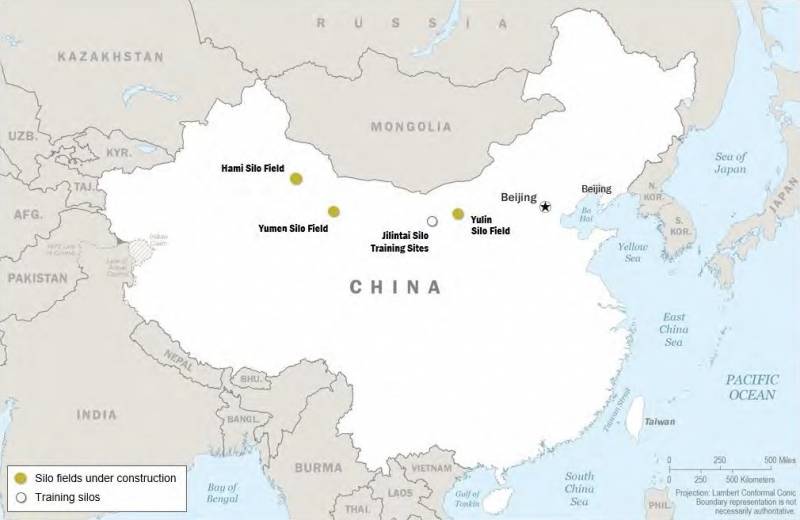
Location of the main facilities of the PLA Strategic Missile Forces. Position areas in operation or under construction are marked in yellow, training facilities are in white.
On October 19, the US Department of Defense published its annual report “Military and Security Developments Involving the People's Republic of China”, dedicated to the army and military potential of China. The document is intended for Congress and should show it the state of affairs in a rival power. As always, special attention in the report was given to Chinese strategic nuclear forces—special munitions and their delivery vehicles.
Strategy and Opportunities
The authors of the report remind that China has been actively developing its strategic nuclear forces for more than 10 years. They are gradually growing, receiving new and modernized systems and complexes, and also improving in other ways. A comparison with the previous state of affairs demonstrates a multiple increase in quantitative and qualitative indicators.
In order to increase the capabilities of strategic nuclear forces, measures are being taken to create, build and deploy platforms and delivery vehicles. The PLA nuclear forces have a full-fledged nuclear triad, which includes ground-based, underwater and air-based systems. The existing infrastructure for their operation is also being modernized and new facilities are being created.
The report suggests that the Chinese defense industry has launched new reactors to produce weapons-grade plutonium and reprocess existing warheads and fissile materials. At the same time, military industrial facilities, for reasons of camouflage, are presented as civilian energy enterprises.
Separately, the construction of new position areas with a large number of silo launchers is noted. To date, three such areas have been completed and possibly put into operation, containing up to 300 launch mines. Some of the structures are already equipped with missiles and are involved in combat duty.
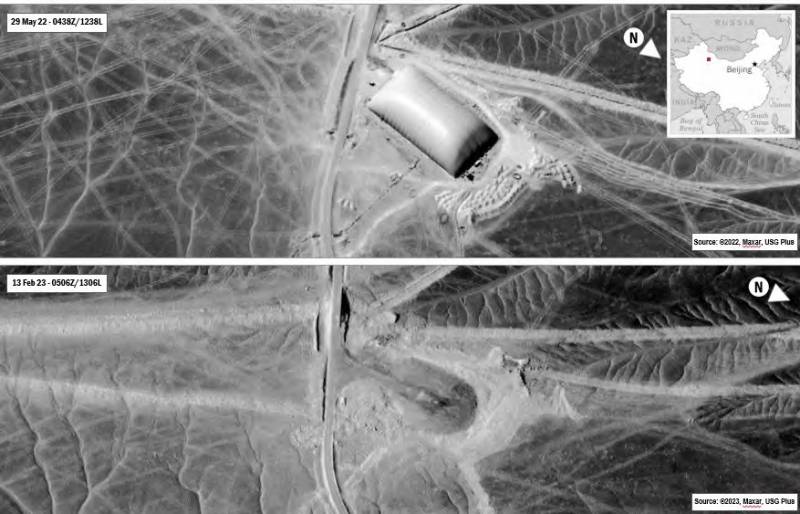
Construction of the silo launcher (top) and the finished facility
Despite all the changes, the strategy for using strategic nuclear forces remains the same. It provides for the creation of all the necessary forces and means to deter a potential enemy, as well as to deliver a retaliatory strike. At the same time, China undertakes not to use nuclear weapons. weapon first. However, the Pentagon believes that in a critical situation Beijing may deviate from this idea and respond with a nuclear strike to conventional aggression.
Strategic nuclear forces complexes are constantly on duty and are always ready to carry out combat missions. According to the report, China is seeking to improve their readiness levels and reduce response times. To do this, part of the nuclear forces can be transferred to high readiness. Different connections alternately remain in this state, while others continue to serve at a lower level of readiness.
Nuclear arsenals
The number of special ammunition in service with the PLA strategic nuclear forces continues to grow. Several years ago, Pentagon reports indicated the presence and deployment of only one or two hundred such products. In a recent report, the number of deployed warheads as of May 2023 was estimated at 500 units. or more.
American analysts also give forecasts for the future. They believe that China will continue to produce additional nuclear warheads and ultimately increase its arsenals significantly. By 2030, the deployment of at least 1 thousand products is expected, and by 2035, the number of strategic nuclear forces of the PRC will be equal to the leading nuclear powers - Russia and the United States.
In this context, US Department of Defense analysts recall the tasks set by the Chinese leadership several years ago. By 2049, it requires building a world-class military. At the same time, if the American forecast about the increase in the number of nuclear warheads comes true, then in the sphere of strategic nuclear forces such tasks will be completed significantly ahead of schedule.
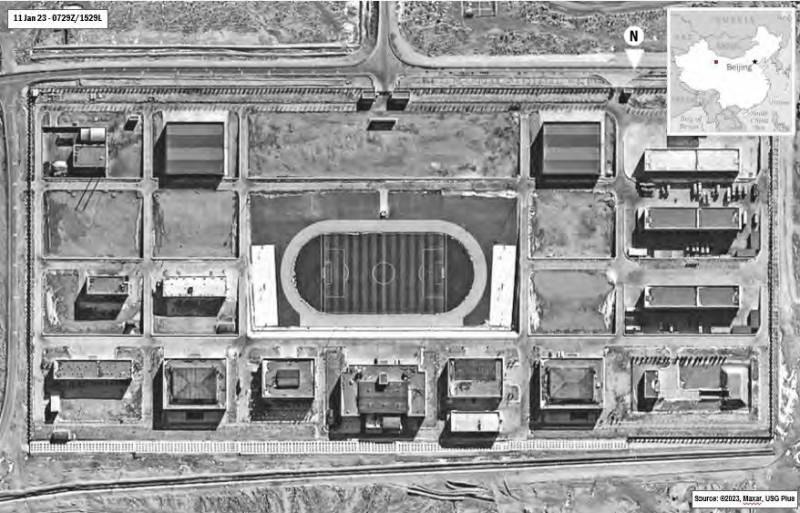
A military town near one of the positional areas
Media and distribution
The PLA strategic nuclear forces have long become a full-fledged nuclear triad with all the necessary components. Now the Pentagon is trying to track the state of this structure, the number of different carriers and their proportions in the total number of weapons, etc. The latest report again provides figures and figures, but it is unclear how these data correspond to the real state of affairs.
The basis of strategic nuclear forces continues to be ground-based missile systems equipped with intercontinental ballistic missiles. In total, the Pentagon has counted 350 deployed products of this class capable of attacking targets in the continental United States.
A large number of silo-based ICBMs have been deployed in old and newly built position areas. The older liquid-propellant DF-5 missiles and the modern solid-propellant DF-31 are on duty simultaneously. They cannot name the exact number of missiles in the silos, but it is assumed that it is constantly growing.
Some ICBMs are deployed on mobile ground-based missile systems that carry out patrols in different regions of China. This grouping is built on the basis of DF-31 and newer DF-41 products. American intelligence also notes that strategic PGRKs are complemented by similar systems with medium-range missiles that control a significant part of the Indo-Pacific region.
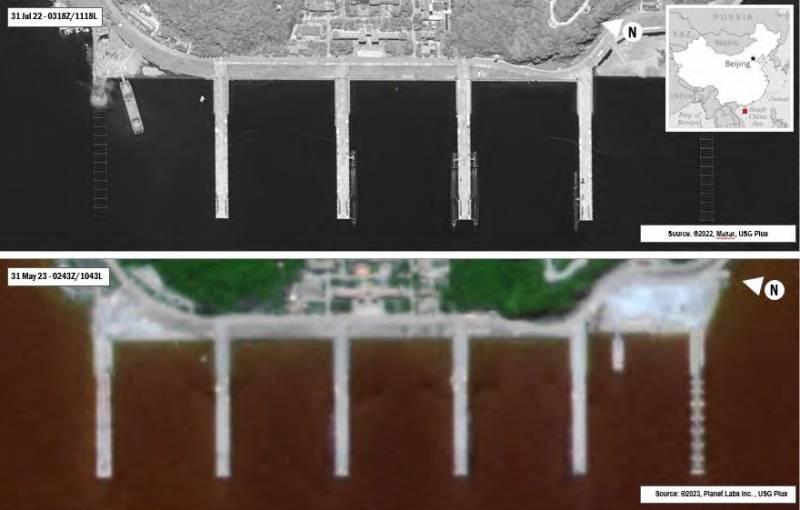
PLA Naval Base Yalong - construction of new piers for SSBNs completed
The naval component of the strategic nuclear forces is being maintained and developed. There are several ballistic missile submarines in service regarding the old Type 094 project. They are now being transferred from the older JL-2 missiles to the modern JL-3 ICBMs with an increased flight range. With the help of such missiles, SSBNs can attack the United States without leaving the safe waters off the coast of China.
Construction of the 094 submarines continues, and new ships will soon enter service. The Pentagon associates the construction of new ships in the series with delays in the implementation of the next Type 096 project. However, we can also talk about simply increasing the number of the marine component due to an existing and proven project.
At the moment, American intelligence knows about six “094” submarines, each of which can carry 12 JL-2 products or up to 20 JL-3 missiles. In the coming years, the SSBN of the next project, Type 096, is expected to begin service. For a certain period of time, new ships will serve together with existing ones. It is unknown when their joint operation will end and “096” will become the main SSBNs in the strategic nuclear forces of the PRC.
The air component of the strategic nuclear forces is currently represented by long-range H-6N bombers. The aircraft with the letter “N” differs from previous modifications by the presence of a boom for in-flight refueling and new equipment. In addition, it will apparently be able to use an advanced aeroballistic missile. The Pentagon report does not provide any information about such a missile, but compares it with a product of the DF-26 complex.
Perspective development
The authors of the report for the US Congress believe that the development of China's strategic nuclear forces will continue and follow already known paths. The PLA will build new facilities to house weapons, and industry will begin to improve existing models and create new ones. In addition, the necessary production and infrastructure will continue to be prepared.
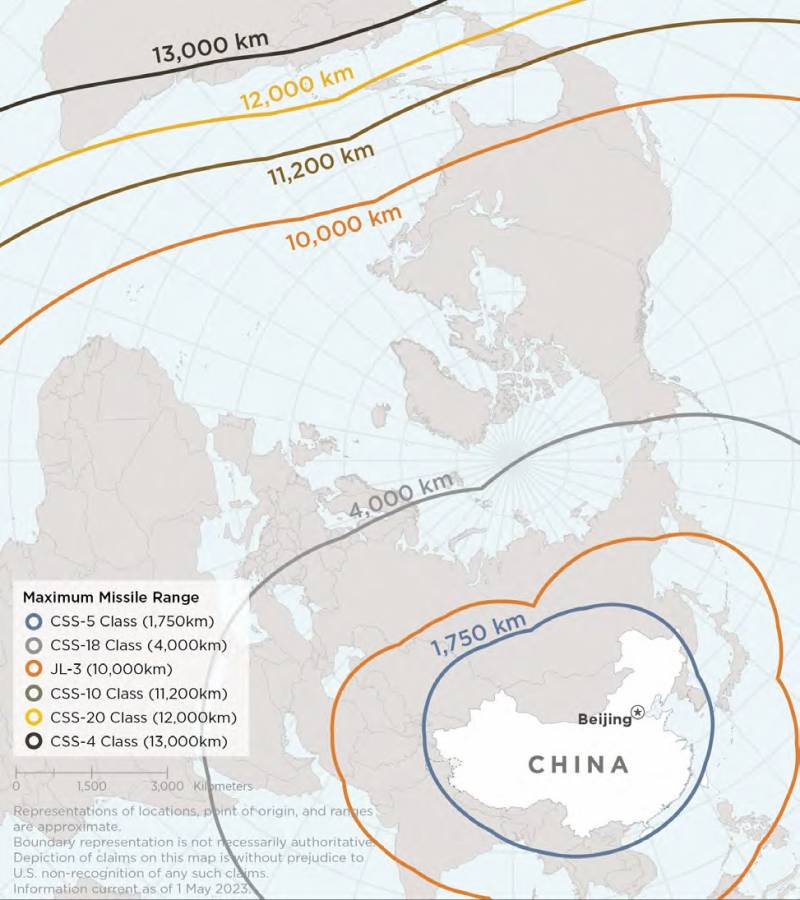
Areas of responsibility of different PLA missile systems
It is expected that the PRC will continue to create new complexes and systems of different classes, which in total will give it broad combat and political capabilities. The report's authors expect the emergence of both low-power, high-precision cruise missiles and full-size ICBMs with megaton-class warheads.
The main task of such development and construction is to ensure strategic nuclear deterrence. A potential adversary must understand that attempting a massive nuclear attack on China would result in a proportionate response and unacceptably high damage. The growth of quantitative and qualitative indicators will make this threat more serious and convincing.
Increased interest
As such, the Pentagon and the U.S. intelligence community continue to monitor China and its military, collect and analyze available data, and issue regular reports with updated information. Traditionally, a special place in these reports is occupied by information about the strategic nuclear forces of the PRC, their capabilities and development prospects.
It should be noted that US specialists do not always have access to truthful and up-to-date information about strategic nuclear forces and the PLA in general. Moreover, the lack of such data seriously limits the ability to make plausible predictions. However, the latest report on military and security developments is of some interest. It shows how the United States sees and perceives a strategic competitor and allows one to imagine how they will fight it.
Information